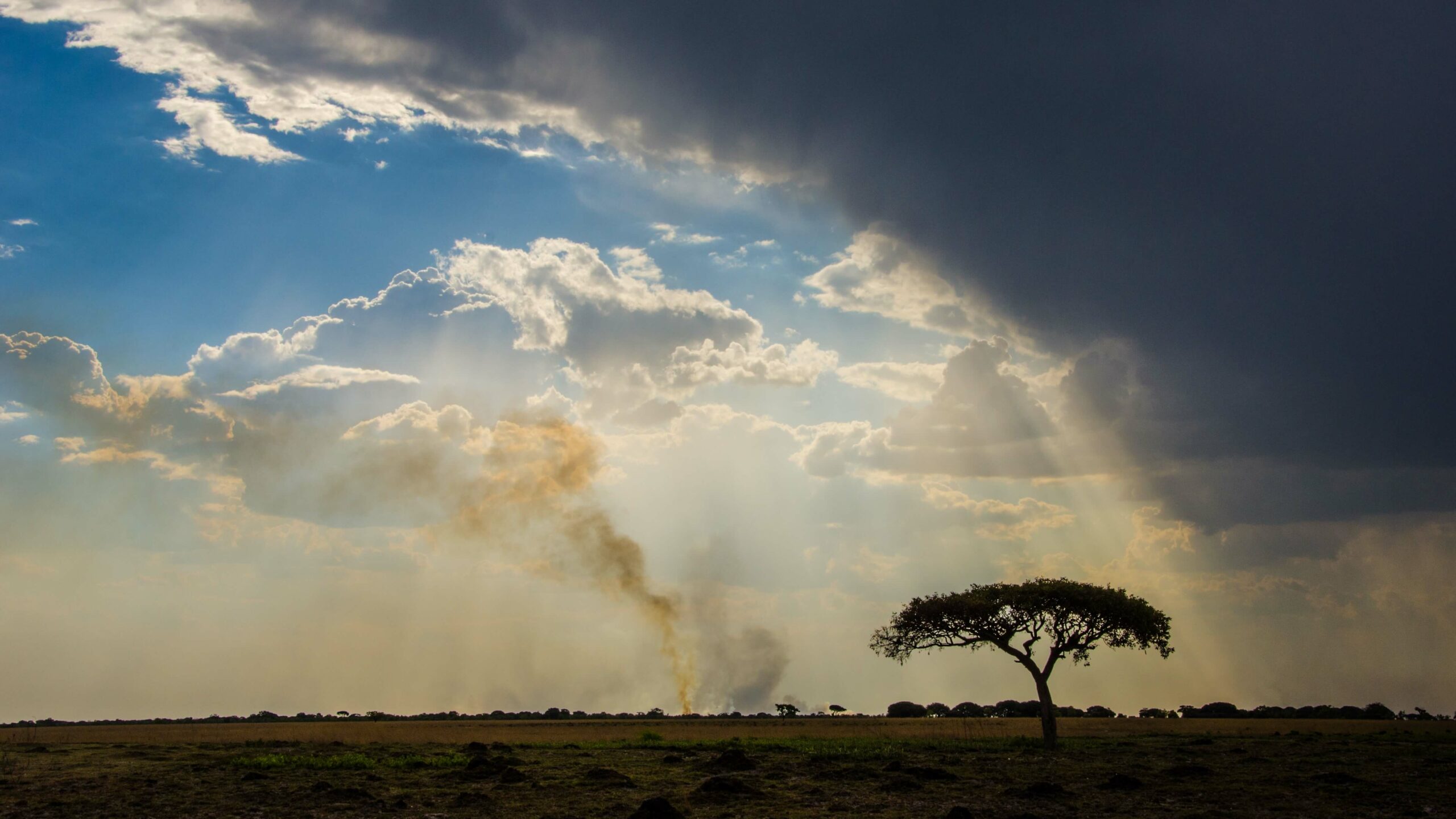It’s still early in the morning, and the still-cold air is filled with the droning and chirping of numerous cicadas and birds. You’re walking in single file along a dusty hippo trail when your guide gives the signal in hushed tones and you come to a halt: up ahead, a lioness comes into view, fixes you in the soft gaze of her amber-colored eyes, and then slinks away silently into the surrounding bush with a flick of her tail.
You only have a split second with her, but by the time she’s gone, your heart is pounding with joy, and you realise you’ve been holding your breath the entire time. Your field of vision expands, and you become more aware of your surroundings, noticing that sounds are more distinct, colours are more vivid, and odours are more pronounced. Zambia is untamed and wild, and you’ve never felt more alive in your life!
South Luangwa National Park in Zambia is widely regarded as the birthplace of walking safaris, but the country is home to many other wonderful parks and reserves that should not be overlooked. Because of this hidden gem quality, these parks have long been a favourite destination for seasoned safari travellers. This is especially true for those looking for a more authentic wildlife experience in a less visited area.
However, it may surprise you to learn that Zambia is also an excellent choice for people who have never been on a safari before. Why? Because the big game viewing is consistently good, the local guides are some of the best in Africa, the parks of the Luangwa and Zambezi Valleys offer a diverse range of activities – game drives, night drives, walking and canoeing safaris – and everything is centred on the mighty Victoria Falls’ swirling mist and thundering water.
Begin Your Foot Journey in South Luangwa
If you go on a guided walking safari, you will be able to immerse yourself completely in this untouched wilderness. Your awareness of the world around you is expanding, as is your understanding of how each component of nature contributes to the amazing ecosystem that exists here. You won’t have to wait long to recognize the pawprints left by various animals in the sandy riverbeds, discover which plants are edible, and be amazed at how much information you can glean from the piles of animal faeces that are everywhere.
There is a good chance that you, too, will feel the thrill of seeing that lion. This is especially true in South Luangwa, which is one of the best places in Africa for big game viewing on foot. Walking, on the other hand, is an activity that many who are looking to cross items off a list should avoid because there are no guarantees. You will spend the nights in comfortable tents set up by the knowledgeable crew, complete with all of the essentials of camp.
The best places to stay are hidden deep in South Luangwa, away from other people, automobiles, and other signs of civilization. Don’t be put off by the term “bush camp”; you’ll be more than satisfied with the high-quality bedding, hot showers, excellent down-home meals, and ice-cold drinks served around the campfire beneath the clear night sky.
Games Drives
The South Luangwa National Park is Zambia’s most well-known park, and for good reason: the area around the Luangwa River has one of Africa’s highest concentrations of wildlife. With the notable exception of rhinos, which are extremely unlikely to be found here, there is an abundance of large game that is more than enough to fill the memory cards of multiple cameras.
Walking through this secluded wilderness makes you feel like you’re a part of it, whereas driving through it allows you to see more animals and cover more ground. What is our recommendation? Combine walking safaris with game drives in this region, known for its high concentration of leopards and lions, rumbling herds of elephants gathered around oxbow lakes and endemic species like Thornicroft’s giraffe and Crawshay’s zebra.
The South Luangwa guides do not automatically radio each other when they find a good sighting, which is one of our favourite guiding practices. One of our favourite aspects of the South Luangwa guides is this. It means that if you come across a large cat or a kill, you will have the space and freedom to study it discreetly, which is a fantastic experience.
Go On A Canoe Safari on Zambia’s Lower Zambezi River
The Lower Zambezi Reserve is breathtakingly beautiful found all along the Zambezi River, which is known for its vastness and clear blue waters. The lodges’ daily schedules are more flexible, and they will put together a day of activities to fit your preferences, such as game drives, nature walks, or – the trip’s highlight – canoe safaris. There are also a lot of big animals in this area.
As you glide by the twitching ears and snorts of submerged hippos and knobbly Nile crocodiles sunbathing on the riverbanks, you’ll be drifting rather than paddling. A canoe safari is not something you should consider difficult. It’s calm, but there’s no denying the excitement! Because they are so familiar with the animals’ behaviour and routines, the guides have an uncanny ability to anticipate their routines and actions.
You’ll discover that paddling a canoe allows you to get a closer and more personal view of animals like buffalo and elephants, who ignore your quiet passage past them as they drink their fill at the water’s edge. You will be able to observe these animals in a more personal and up-close setting.
Get to Know Vic Falls Up Close and Personal
Mosi-oa-Tunya, which translates to “The Smoke That Thunders,” is an apt name for Victoria Falls. Nothing can prepare you for the first time you see the Zambezi River crashing over the drop in full flood. Imagine 500 million litres of water per minute pouring into a deep rocky gorge, sending a cloud of mist and spray far into the air, illuminated by rainbows.
The Main Falls is in Zimbabwe, but the Zambian side of the falls is equally beautiful during high-flow months (February to May). The Knife-Edge Bridge in Zambia is one of our favorite viewpoints in the country because it brings visitors up close and personal with a roaring waterfall; however, visitors should be prepared to get wet.
A trip through Zambia can begin or end with a visit to Victoria Falls, which is always a memorable experience. You can go whitewater rafting on high-grade rapids, or you can take a scenic helicopter flip or a scenic flight in a microlight. If you have the time, I recommend dedicating three days to exploring the numerous available activities.
Take part in one of the World’s Greatest Mammal Migrations
From October to December each year, an estimated 10 million straw-colored fruit bats populate the skies in and around Kasanka National Park. Yes, you read that correctly: the Great Wildebeest Migration in East Africa is not the world’s largest animal migration.
The sheer number of bats is incredible, but the most exciting aspect of this natural phenomenon is the atmosphere: massive birds of prey soar through the spectacular skies and eat the bats for breakfast. Sitatunga antelope, which are extremely rare and only found in swampy areas, can be seen grazing in the foggy wetlands known as “Dambos” in Kasanka National Park in the early morning hours. If you consider yourself a true safari enthusiast, you simply cannot pass up this opportunity.
What You Need to Know About Kasanka Park
- This is the only location on the planet where you can witness the described natural occurrence.
- The migration occurs only about ninety days out of the year (late October to mid-December).
- To get to Kasanka as soon as possible, we recommend booking a room at the Wasa Lodge and flying in on a private charter plane (the park contains its airfield).
Visit the Busanga Isolated Plains in Kafue Province
Despite being one of Africa’s largest national parks, Kafue National Park is Zambia’s least visited major park, despite being one of the continent’s three largest. Due to its remote location, Kafue remains exceptionally wild, with only a few luxury-tented camps scattered throughout the area.
The Busanga Plains are located in Kafue National Park’s far north. They are one of Zambia’s most important wetland resources and provide the best opportunities for wildlife viewing in the park. These grassy floodplains are home to large herds of red lechwe, puku, and majestic roan antelope. These grasslands are home to a variety of predators, including packs of wild dogs, a lion pride, and a lone cheetah.
With over 490 species of birds reported, you can spend your days in Kafue on game drives, boat rides, walking safaris, and fishing on the Kafue or Lunga Rivers, and twitchers are likely to add a few ticks to their lists.
Source: www.go2africa.com




